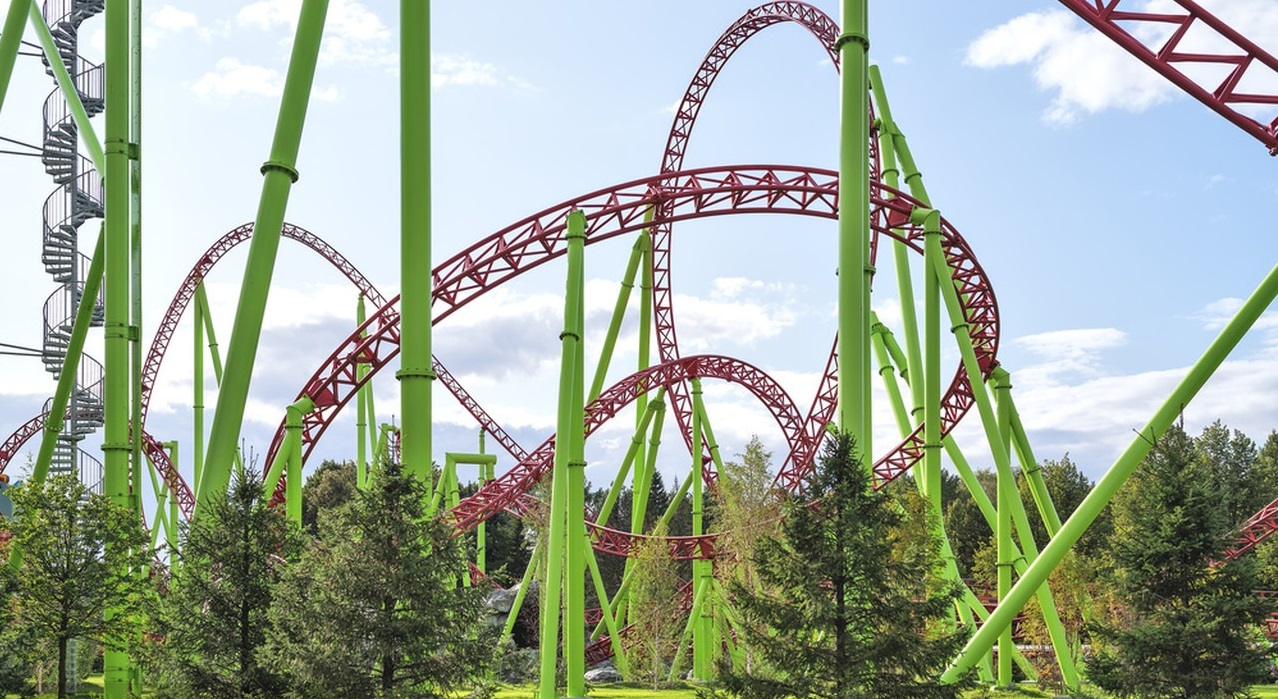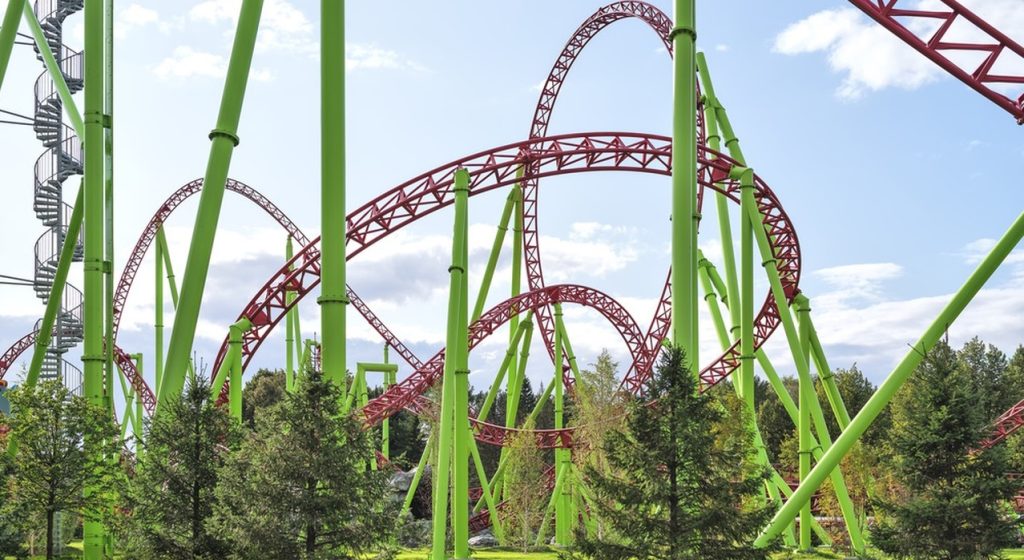When planning an amusement park or theme park, one of the biggest investments is typically the roller coaster. These thrilling rides are often the heart of a park and can significantly influence the overall guest experience. However, before making this substantial investment, it’s crucial to understand the pricing structure of roller coasters (американские горки). The cost of a roller coaster varies widely depending on several factors, and one of the most important steps in the process is deciding how much you’re willing to spend. In this article, we will explore how to determine your budget, what to consider when setting it, and how to make an informed decision when choosing a roller coaster for your park.
Step 1: Setting Your Budget
Setting a clear budget is the first and most important step in the process of purchasing a roller coaster for your amusement park. Roller coasters can range in price from a few hundred thousand dollars for smaller, simpler rides to several million dollars for large, complex thrill rides (экстремальные аттракционы). Therefore, understanding how much you’re willing to invest will greatly influence your options and help streamline the decision-making process.
Understanding the Different Costs Involved
It’s essential to acknowledge that the price of a roller coaster isn’t limited to just the cost of the ride itself. Several other expenses must be taken into account:
- Design and Customization: Some roller coaster manufacturers offer bespoke designs, allowing you to customize everything from the track layout to the theming. Customization can significantly raise the price, especially if you choose to integrate unique features or effects, such as special lighting or sound.
- Installation Costs: Installing a roller coaster involves significant groundwork, including foundation work, electrical installations, safety measures, and ensuring that the ride is built to local safety regulations. Installation can sometimes be a larger cost than the coaster itself, especially for complex or large designs.
- Operational and Maintenance Costs: Roller coasters require regular maintenance to ensure they remain safe and operational. The cost of upkeep, including repairs, inspections, and replacement parts, should be considered as part of your ongoing investment.
- Land and Infrastructure: If you don’t already have the space, purchasing land or developing an area within your park to accommodate the roller coaster can add additional expenses. Some roller coasters, particularly larger ones, require a significant amount of land and infrastructure, which could lead to higher overall costs.
Assessing Financial Flexibility
When determining your budget, think about the long-term financial impact of the ride. While it’s tempting to opt for a more expensive, high-tech roller coaster, it’s important to balance that against your park’s financial capabilities and projections for growth. Ensure you leave enough room in your budget for other rides and attractions, such as a Ferris wheel (сколько стоит колесо обозрения) or water rides, which are also important to keep the park diverse and appealing.
Step 2: Choosing the Type of Roller Coaster
Once you’ve set your budget, the next step is determining what type of roller coaster is most appropriate for your park’s theme and audience. Roller coasters come in various designs, and each type offers a different experience. Understanding the various types of coasters available will help you make a more informed decision.
Types of Roller Coasters
- Wooden Roller Coasters: These coasters are classic and offer a unique ride (аттракционы купить) experience with a nostalgic appeal. They are often less expensive than modern steel coasters but require more maintenance. If you’re working with a smaller budget, a wooden coaster could be a viable option.
- Steel Roller Coasters: Known for their smooth rides and ability to accommodate more complex designs, steel roller coasters are often the go-to for thrill seekers. They are more expensive but offer more possibilities in terms of design and ride dynamics.
- Inverted Coasters: These coasters feature tracks that are above the riders, who are suspended beneath them. These coasters provide a thrilling and intense experience, often appealing to older audiences. They are typically more expensive due to the unique design and technology required.
- Launch Coasters: These roller coasters use powerful launch systems to accelerate riders to high speeds rather than relying on traditional lift hills. They are some of the most thrilling and expensive options available, often used for major parks with larger budgets.
- Family Coasters: These coasters are designed for families with children and provide a less intense experience compared to traditional thrill rides. They are typically more affordable and perfect for parks that cater to younger audiences.
Step 3: Consider Additional Features
Beyond the basic design of the roller coaster, there are additional features and attractions that may be important to consider, depending on your park’s theme and audience.
Ride Experience Customization
One of the ways to enhance the experience for your visitors is through ride customization. Some manufacturers allow you to incorporate themed elements into your roller coaster, such as special visual effects, lighting, or audio. These enhancements can increase the cost of the ride but provide a more immersive experience, making your roller coaster stand out from others in the park.
Integration with Other Rides
When building a park, it’s essential to think about how the roller coaster fits in with other attractions. If you plan on adding a Ferris wheel or a water-based ride, for example, it’s important to ensure that the roller coaster complements these other rides both in terms of theme and location. Creating a cohesive experience can boost your park’s appeal.
Step 4: Installation and Maintenance Costs
As previously mentioned, installation and ongoing maintenance are significant factors in the total cost of a roller coaster. The installation process can take several months, depending on the complexity of the coaster, and requires a team of experts to ensure that the ride is set up safely and correctly.
Maintenance is a constant concern for roller coasters, as regular inspections and repairs are necessary to maintain safety standards. The maintenance costs should be factored into your budget and planned for throughout the lifespan of the ride.
Step 5: Consider the Long-Term Impact
Purchasing a roller coaster isn’t just about the immediate thrill it brings; it’s also about its long-term contribution to your park’s success. A popular roller coaster can drive ticket sales and increase repeat visits, especially if it becomes a highlight of your park. Additionally, a well-maintained coaster will continue to generate income for years, making it a sound investment.
Conclusion
Determining the price of a roller coaster for your amusement park requires careful planning and consideration of several factors. Setting a budget, understanding the types of coasters available, considering customization options, and accounting for installation and maintenance costs are all essential steps in making an informed decision. By keeping these factors in mind and evaluating your park’s overall needs, you can select a roller coaster that fits your financial situation and delivers a memorable experience for your guests. Remember, whether you’re adding a thrilling coaster or complementing it with other attractions like a Ferris wheel, your goal should always be to create a diverse and exciting park experience that keeps visitors coming back for more.

